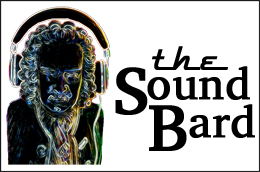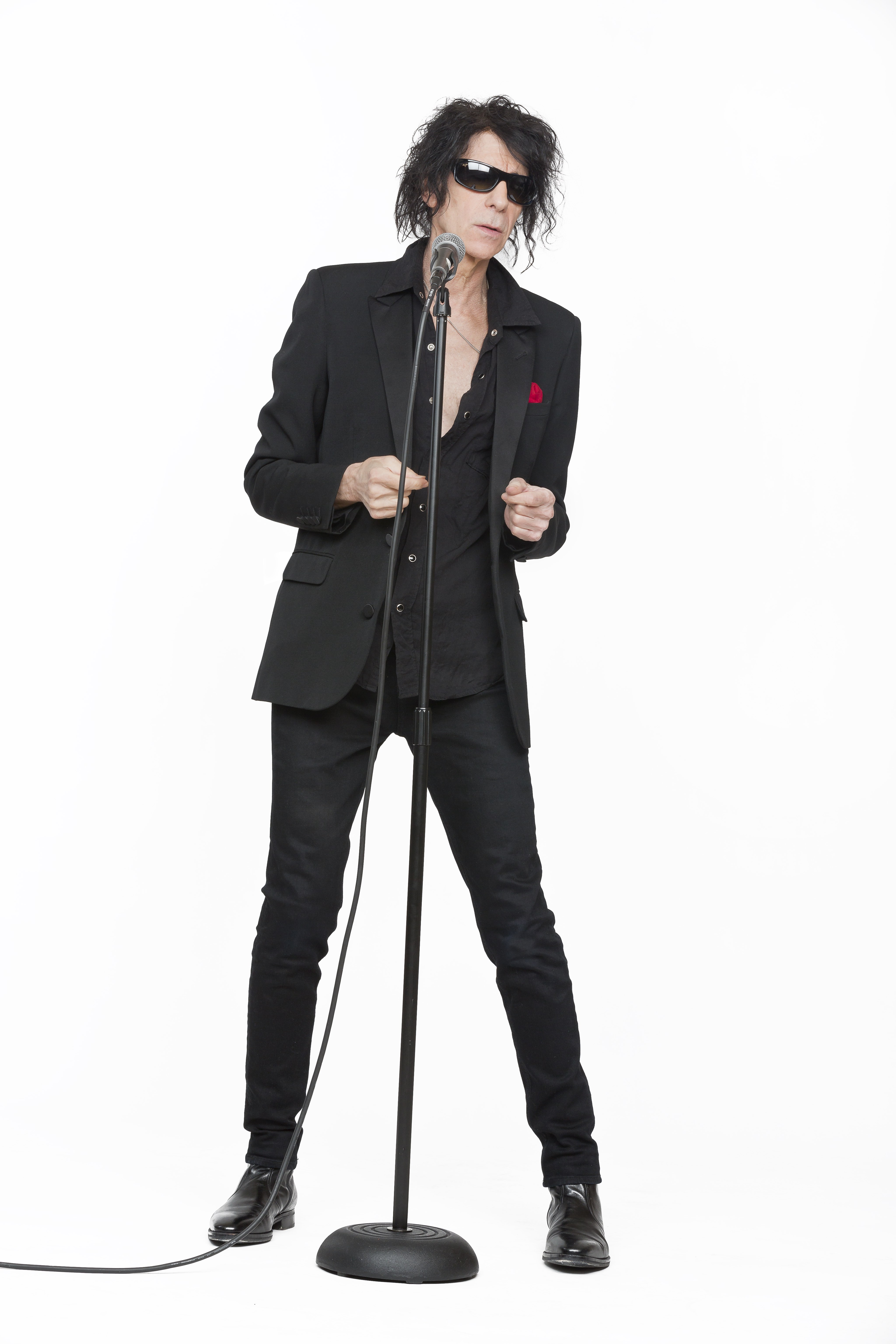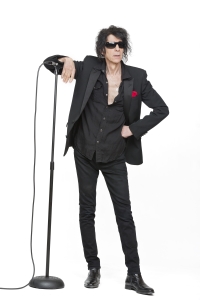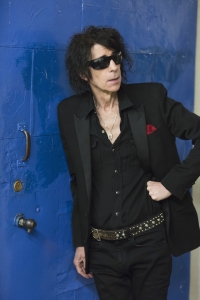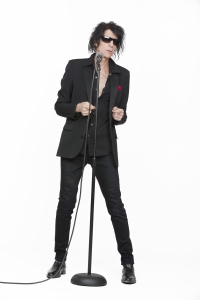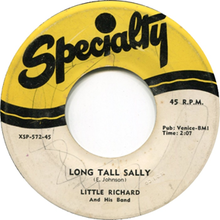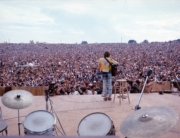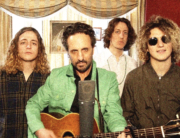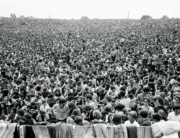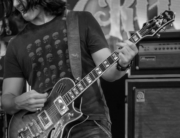BY MIKE METTLER – APRIL 20, 2016
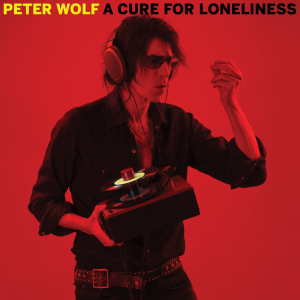 I think it’s fair to say Peter Wolf is one badass Mamma Jamma Wolfa Goofa. The fast-talkin’ onetime DJ and longtime J. Geils Band frontman proves that point to the nth degree on his eighth solo album, A Cure for Loneliness (Concord), which teems with honest energy and reflective grace, from the steadfast template-setting of the lead track “Rolling On” to the shuffle blues of “How Do You Know” to the live bluegrass-stomp reworking of the 1980 J. Geils Band hit “Love Stinks.”
I think it’s fair to say Peter Wolf is one badass Mamma Jamma Wolfa Goofa. The fast-talkin’ onetime DJ and longtime J. Geils Band frontman proves that point to the nth degree on his eighth solo album, A Cure for Loneliness (Concord), which teems with honest energy and reflective grace, from the steadfast template-setting of the lead track “Rolling On” to the shuffle blues of “How Do You Know” to the live bluegrass-stomp reworking of the 1980 J. Geils Band hit “Love Stinks.”
Wolf has definitive ideas about how he wants his music to be heard these days. “I’m not a fan of overly compressing things or limiting stuff,” he admits, “so I try to keep it warm with a good sonic quality. I tend to keep things dryer, which is a lot more to my personal taste.”
Not only that, but the man is very much a fan of having you hear this album on wax. Just get a load of the album cover above, which shows Wolf with a 45 changer in his right hand and Sennheiser-styled headphones on his noggin. Wolf, 70, called in from his adoptive home of Boston (he’s actually a Bronx native) to discuss the sonic choices made for Loneliness, his favorite records and gear, and the inspiration for his kinetic live performing style. When it comes to the original Wolfa Goofa, rest assured your ears are gonna have fun long past the midnight sun.
Mike Mettler: Was there a certain type of sound you were striving for on A Cure for Loneliness? On every song, your voice is front and center in the mix, with not a lot of effects on it.
Peter Wolf: Yeah, definitely so; I’m glad you picked up on it. A lot of the recordings I like have a nice, limited plate that doesn’t get in the way — not too wet, and not too much effects. That’s how a lot of my records are made. But also, it depends on the song. For example, “Tragedy” has more of a slapback feel to it, and that becomes important to the song.
Mettler: Right out the box, “Rolling On” is essentially your mission statement. We’re getting you straight up down the middle. You are there.
Wolf: Well, thanks. If it’s working well, it should be straight up down the middle. (chuckles)
Mettler: Yeah, like a good fastball.
Wolf: When I went to check out the [Loneliness vinyl] test pressing, I figured I’d go to a friend’s high-end audio store to put it on a high-end system, and he said, “That’s funny — why did you put the voice all the way to the left?” I said, “No, it shouldn’t be on the left. Put on another recording.” He put on this great, classic Sinatra record, and the voice was all the way to the left. And I go, “Nope, it ain’t the vinyl. It’s your system, buddy!” (chuckles)
Mettler: Yeah, that’s not usually a vocalist’s choice, unless it’s The Beatles circa 1966-67 with you on the left and Ringo on the right.
Wolf: And as we’ve learned through history, they spent so much time on the mono that when they got to the stereo, they just said, “Do what you want to do.”
Mettler: Right. That’s what happened with Sgt. Pepper (1967), where they basically gave [producer] George Martin and [engineer] Geoff Emerick about a night to create the stereo.
Wolf: Yeah. And at that point, very few people had stereo. All radio was in mono. The music hadn’t moved to the FM band yet, so everything was all AM.
Mettler: Is vinyl still your favorite method of listening?
Wolf: Yeah, I really enjoy vinyl. I invested in a nice [Rega] turntable system, and I’ve tried some different cartridges since things have developed in the audiophile world. But it depends. I have nothing against digital. It’s just that, when you’re listening for a long time like I do, vinyl is just less fatiguing and more inviting if it’s played on the right kind of system. And there is the rub, because a lot of people think vinyl by itself has a magic to it — but it depends on what you’re playing it with.
For a while, I had very expensive, high-dollar cartridges for my turntable. With it, jazz had a warm, Ben Webster/Lester Young sound, and classical pieces and piano concertos sounded fantastic. But when I put on some of my R&B and blues stuff, it didn’t sound as inviting. So I ended up buying a cheap cartridge for about $100, and it magically did the trick. It’s not really a money thing — if it sounds good, that’s the key to it. It’s like food. If it tastes good, it’s good for you, and that’s all you need.
Mettler: For my reference turntable, I had to make sure I went with the higher-grade cartridge.
Wolf: Oh, good. Did you find it to be an important difference?
Mettler: I did. I found I got better detail on cymbal work and bass response, so I feel I made the right decision.
Wolf: People suggested to me at one point, “You should get two turntables; one just for your 45s and R&B.” You get into that audiophile world, and it becomes an interesting journey.
Mettler: It can become a rabbit hole. But like you said, what’s really best is to find a sound that works for you. Doesn’t matter if it costs 100 bucks or 1,000 bucks. Your ears are looking for a certain type of sound.
Wolf: Well put, Mike.
Mettler: Getting back to radio, FM came along at a good time for you, because you ruled those airwaves for about 6 hours a night for a good period of time.
Wolf: Yeah, that was exciting. I had a show for a very limited time on a station called WTBS, which was the college station for MIT. The fellow who was putting it together [Ray Riepen] was a very eccentric character who came from Kansas City. He was a very wealthy guy who decided to buy a Boston newspaper, and he also had the big Boston rock club where I had a band, The Hallucinations, before J. Geils was the house band. It was called the Boston Tea Party [located at 53 Berkeley Street in Boston, from 1967–71].
He decided to buy this radio station [WBCN], and he asked if I wanted to partner up with him if I had $10,000. I said, “Well, I only have 10 dollars.” He said, “Well, you can help me out by bringing some of your records down and spinning them.”
The first day he started the station, when it became a “progressive” rock station, I went down and started playing all my wild rhythm & blues stuff, and blues stuff, and honky tonk. It went from midnight to 6 in the morning. So I had “The Wolfa Goofa Mama Toofa All-Night Cavalcade Review.” I’d get on the air and go (spits it really fast), “This is Wolfa Goofa Mama Toofa rocking the lillies and the night kids from Alabama, keeping it all hits and having a little fun until the midnight sun. Give us a call, don’t you stall, and we’re gonna do it to ya and get ya right through it” — BOOM. Then I’d play a record.
Mettler: That’s a lost art these days. You don’t get to hear those kinds of voiceovers that hit the post much anymore.
Wolf: Right. Well, there are some really good syndicated shows that I find I can still really discover things. But radio as a whole, like most things, has changed.
Mettler: At least we’ve got satellite radio and channels like Little Steven’s Underground Garage, which plays a lot of your material.
Wolf: Yeah, Underground Garage is great. The Loft is good. That’s really come in and filled a well-needed niche. But see, we’re spoiled here in Boston. Besides satellite, we have so many great college stations up here, between MIT, Harvard University, Emerson, Tufts, UMB, University of Mass — just to name a few. There are some really great stations and, of course, with streaming, you’ve got the world.
Mettler: Are you’re cool with streaming in general? Not only for radio, but for how people listen to music, even if you like vinyl better?
Wolf: Well, sonically, I agree with you. Streaming is just there, and it doesn’t make sense to comment on it because it ain’t going away. But if you want to make an argument — and there are some who feel strongly about this — not long after the 78, sound reproduction deteriorated. The 45 wasn’t as good as the 78, the 33 1/3 wasn’t as good as the 45 or the 78, etc., etc. And then came the cassette and the 8-track, and they weren’t as good as the vinyl, and then came the CD and the MP3. So you could make arguments, but I think the technological revolution made digital a very immense event that has drastically changed so much in the music world.
Mettler: Agreed. I do like having access to all my favorite stuff, to have that portable jukebox go along with me. We all walked around with Walkmans back in the day, now we do it with our phones.
Wolf: You could even take it a step beyond that with people walking around getting their rock & roll through little cigarette-size boxes, the transistor radio. It’s all a relative thing.
All I try to do is, I have a sonic sensibility. I’m not saying it’s anything unique or special, but it’s like a painter. You try to make the painting as aesthetically pleasing to yourself as possible, and that’s why I try to use very gifted engineers to be a part of these projects, studios that have the right kind of equipment that are able to give me the sound I’m looking for, and people who mix with the sensibility I need.
And then, of course there’s mastering, which is such a vital last element. Somebody like Bob Ludwig at Gateway Studios up in Portland [Maine] is the crème de la crème.
Mettler: I know a lot of artists get frustrated when they get the final product and it doesn’t sound quite like how they heard it in the studio, the way they heard it when they made it. To me, a good example of getting it right is “It’s Raining” — that snare at the very beginning, when the song kicks in, is so natural-sounding to me.
Wolf: There are so many elements involved. You have the playing, and the sound of the instrument itself. That’s the first thing. Then you have the room — how does it sound in the room? That’s the key. You’re in the room saying, “This is the sound we’re going for.” That’s your first reference point.
Then you go into the studio to see if it’s being translated into the control room, and being captured. That’s Step 1. Step 2 is mixing it in relation to everything else. And Step 3, which people don’t realize is as important as it is, is the mastering of everything you’ve done.
I try to explain to people who ask, “What is mastering?” I say, “Remember in the old days when you were sitting in front of your color TV, and you decided to add a little more hue and contrast? You’d change the shade of the green or the sharpness of the contrast and the colors. That’s kind of what mastering does.”
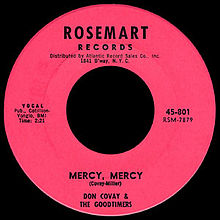 Mettler: Would you say “It’s Raining” is a good example of you finding the right hue?
Mettler: Would you say “It’s Raining” is a good example of you finding the right hue?
Wolf: Yeah. I think a lot of the songs came across. That’s what the labor is about, to make sure it gets that kind of feel. And “It’s Raining” definitely has a certain sensibility to it. It has a Don Covay sensibility to it. I was a big fan of Don Covay’s Atlantic records, things like “Mercy, Mercy” (1964) and “See-Saw” (1965). And the things he did with Aretha [Franklin] — “Chain of Fools” (1967), and that kind of stuff.
Don had a sensibility with his own records. There’s a sense of life to it, and a lot of those Atlantic records, Jerry Ragavoy, and Bert Berns with “Twist and Shout” (1961). There’s a certain life to it that’s prevalent when you listen to them.
You can put on Van Morrison singing “Here Comes the Night” [written by Bert Berns, and sung by Morrison with the Irish band Them in 1964], and it jumps right out at you. Besides the performance of it, the sound aspect is just beautiful. You can then put on Erma Franklin singing “Piece of My Heart” (1967), and it’s just so rich.
Mettler: You wanted Bobby Womack to do “It’s Raining,” but he unfortunately passed away [on June 27, 2014, at age 70] before you could get to him.
Wolf: I had just finished recording it [i.e.,the basic track], and Kenny White, my co-producer and a distinguished artist and songwriter in his own right, said, “Pete, you’re not going to believe this.” I said, “What?” “When you were cutting the track, I got a flash across my phone that Bobby Womack had passed away.” It was kind of eerie.
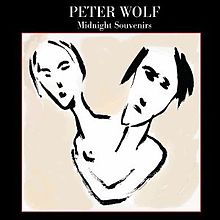 It had happened with the previous album, Midnight Souvenirs (2010). We had been hoping to get Willy DeVille, who I’d always been a big fan of. A similar situation happened. [Wolf originally wanted DeVille to sing the Souvenirs track “The Night Comes Down.”] I knew Willy was sick, but I don’t think people realized how much. It was a shock to find out he had passed away [at age 58 on August 6, 2009].
It had happened with the previous album, Midnight Souvenirs (2010). We had been hoping to get Willy DeVille, who I’d always been a big fan of. A similar situation happened. [Wolf originally wanted DeVille to sing the Souvenirs track “The Night Comes Down.”] I knew Willy was sick, but I don’t think people realized how much. It was a shock to find out he had passed away [at age 58 on August 6, 2009].
“It’s Raining” I had done with Don [Covay, as co-songwriter], and it got lost but kind of refound. It was during a period where I was meeting a lot of great soul influences in my life — people like Thom Bell, Don Covay, Lamont Dozier, Wilson Pickett, Solomon Burke. I had the great opportunity to be at recording sessions with some of these artists. I got to do a duet with Aretha [on “Push,” released on her 1985 album, Who’s Zoomin’ Who?]. You go through those experiences, and you always come away different because they’re always powerful situations.
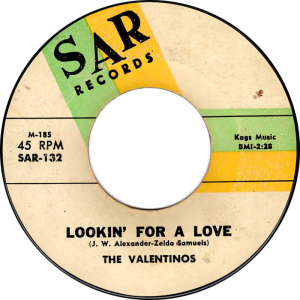 Mettler: Speaking of Bobby Womack, there’s the lineage of you that goes all the way back to the song he did with his early band The Valentinos, “Lookin’ for a Love” (1961), which you wound up doing yourself with J. Geils Band [on 1971’s The Morning After].
Mettler: Speaking of Bobby Womack, there’s the lineage of you that goes all the way back to the song he did with his early band The Valentinos, “Lookin’ for a Love” (1961), which you wound up doing yourself with J. Geils Band [on 1971’s The Morning After].
Wolf: Yeah, I mean, it’s so funny, because it was that old gospel type of song written by J.W. Alexander, one of the co-writers who managed Sam Cooke. He was the “A” in SAR Records — it was Sam Alexander Records.
And I first heard the song from The Valentinos, just as The Stones heard “It’s All Over Now” by The Valentinos [in 1964] — but that one, Bobby wrote. We all became great Bobby Womack fans. I love so much of his writing and his singing, and his guitar playing was so unique. All those great songs he did — “Jealous Love” (1975), or “I’m a Midnight Mover” (1969), or the stuff with Wilson Pickett like the “I’m in Love” record (1967), where he’s singing with Pickett and playing guitar. He was a true character in every sense of the word.
Mettler: I really feel like A Cure for Loneliness is a history lesson where you’re carrying the torch for a lot of styles that listeners can either revisit or come to for the first time, and maybe investigate your lineage a bit further.
Wolf: Ah, well, that’s nice. I mean, as I’ve said many times, it’s the sort of cliché where people ask guys in a band, “What did you get in the band for?” and they say, “I got into a band to meet girls.” But I was painting at the time, and music was such an important friend to me. It was a constant in my life. So for me, it was an opportunity to meet musicians.
I’ll never forget — I was going to art school [at the Boston Museum School of Fine Arts], and there was a band of just painters. Everybody was gathered together, and one of the guys singing forgot the words to the song. I said, “I know the words to that song!” “Well, why dont’cha come up and sing it?” I had enough wine in me that I went to do it, and once I got the bug, I said, “Wow, this is something else.”
Mettler: I say what you do is you paint with your voice.
Wolf: Well, that’s a very nice compliment, but I hope it’s not too far an abstract expressionism. (both laugh)
Mettler: I think your vocals paint in realism. And I think “How Do You Know” is a great example of you doing you, in the best way.
Wolf: Oh, thank you. We had a lot of tracks, so in choosing what went on, we assembled an assortment that somehow worked together. But as you said before, they came from different branches that we tried to have connect to the same tree, without it feeling awkward or stuck on.
Mettler: “How Do You Know” is a track that sounds like we walked in on everybody having a lot of fun.
Wolf: It was! Some of Kentucky’s finest was flowing high during the cutting of that.
Mettler: I also felt like the spirit of John Lee Hooker was hovering over that one.
Wolf: Oh yeah. It’s a cross between John Lee, and a little Slim Harpo.
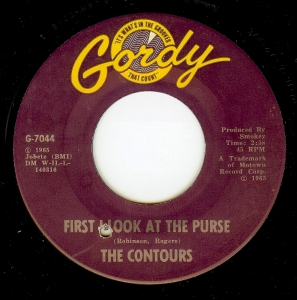 Mettler: That’s a hallmark of what you’ve done all along as an artist, going back all the way to “First I Look at the Purse,” on the first J. Geils Band album (self-titled, 1970).
Mettler: That’s a hallmark of what you’ve done all along as an artist, going back all the way to “First I Look at the Purse,” on the first J. Geils Band album (self-titled, 1970).
Wolf: People always forget that “First I Look at the Purse” is a Smokey Robinson song [written in 1965, and performed by The Contours]. One of the interesting things about today and the technological aspects of having stuff available at your fingertips is I could mention an obscure Rosco Gordon song, and in less than 2 minutes, I could go on the computer, and there it is.
Mettler: Growing up, I called buying records “Voting with my dollars.” If I had 10 bucks to my name, I’d sift through those record bins and make some hard choices. “I can get this one this week, and that one next week.” Usually never all at once.
Wolf: Also, the search — you went from one store to another. You went through the bins, and you discovered things. Just the covers themselves — I remember a fellow I got to meet and work with, who just passed, Otis Clay [at age 73, on January 8, 2016]. He was on different labels, but Hi Records was one of them.
Mettler: Wasn’t Al Green on Hi?
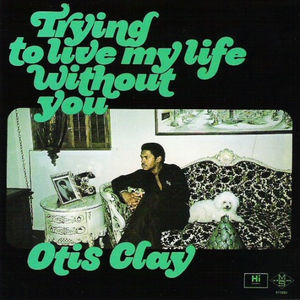 Wolf: Yeah. They had the same rhythm section. Otis had this one album called Trying to Live My Life Without You (1972). Just the cover, you looked at it and said, “I gotta get this!” Or some of the Bobby “Blue” Bland records. I would buy anything by him. Sometimes the covers were just so remarkable. And the early James Brown covers — they became part of the whole experience, for someone like myself.
Wolf: Yeah. They had the same rhythm section. Otis had this one album called Trying to Live My Life Without You (1972). Just the cover, you looked at it and said, “I gotta get this!” Or some of the Bobby “Blue” Bland records. I would buy anything by him. Sometimes the covers were just so remarkable. And the early James Brown covers — they became part of the whole experience, for someone like myself.
Mettler: Wasn’t your first 45 Little Richard’s “Long Tall Sally” (1957)?
Wolf: That’s it! Yeah, Little Richard was my first. I hate to say it, but the reality is true — it was actually my first 78.
Mettler: That’s right. And the label would have been —
Wolf: Specialty.
Mettler: How did you come across that song? Did you hear it on the radio first?
Wolf: It must have been the radio, because radio was so important during my growing up. Plus, I had an older sister [Nancy] who was a dancer for Alan Freed [the DJ], on his “The Big Beat” TV show. She was a record aficionado, so between her, things got passed down, and I got them by assimilation.
Now that I think about it, I heard it on a jukebox, where my sister and friends were all around, dancing. Somebody put on Little Richard, and I remember zeroing up to the jukebox and saying, “Wow!” People kept playing it over and over and over. And every time we heard it, it kept getting better and better and better.
Mettler: Is this when you were still in The Bronx?
Wolf: Yeah, in The Bronx. All my years spent growing up in The Bronx, until I started doing the ol’ hitch-hike around the country.
Mettler: Something I guess we can’t do much anymore, these days.
Wolf: Well, you can, but I wouldn’t recommend it.
Mettler: When you were a DJ yourself, did the rhythm of how you spoke on the air influence the way you wound up singing?
Wolf: No, I think the pattern of certain DJs I grew up listening to, particularly Jocko Henderson, was what I learned so much from. He had a whole style, you know: “Ooh bop-a-do… the time right now is 10:15, and you’re listening to the jock in the record machine. Oh yeah!” Oh yeah.
Mettler: That reminds me of a song called “Oo-ee-diddley-bop!” [from Wolf’s first solo album, 1984’s Lights Out]…
Wolf: Oh yeah! (scat-sings) “Oo-ee-diddley-bop, I’m about to blow my top….” Not too many people have seen that video, with me as the DJ. That was all done in one night. A lot of times on YouTube, they don’t have the beginning with Mr. Bannon [“the Human Cannon!”], who is played by yours truly, and my associate Sgt. Vic, who had been the traffic reporter. He was the guy who ended up doing a lot of the Bob Dylan Radio Shows and writing for comedy TV; he’s an old, old friend. That’s at the beginning, but a lot of times, the video comes in much later, when the music starts in. [SoundBard aside: You can see the full intro in the above clip!]
Mettler: That’s a classic video that shows all of your DNA, right there.
Wolf: The song came together because it was my first solo outing, and I somehow ended up in this house in Boston that these four or five brothers all lived in, and they were all musicians. One of them was Michael Jonzun, who was part of this hip-hop group, the Jonzun Crew, who were on Tommy Boy Records. And the other brother [Maurice Starr] did a lot of songwriting and production for groups like The Stylistics and other R&B groups in the Philly world. He ended up putting together a band called New Edition, and after that dissipated, he put together another group called New Kids on the Block.
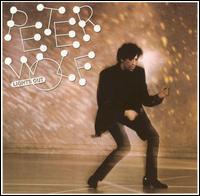 So with these brothers, there was a constant flow of music going on. I dubbed that place the House of Hits. Michael and I got together, and he brought in all these R&B players. It was a fusion between Adrian Belew, G.E. Smith, Elliot Easton from the Cars, the great drummer from Aretha’s band Yogi Horton, the jazz drummer Alan Dawson, Al Anderson from NRBQ, and the P-Funk horns. And we had Don Covay, and Will Lee from the Letterman show — it was just a long list. It was just a whole conglomeration of a crazy combination, but it ended up working.
So with these brothers, there was a constant flow of music going on. I dubbed that place the House of Hits. Michael and I got together, and he brought in all these R&B players. It was a fusion between Adrian Belew, G.E. Smith, Elliot Easton from the Cars, the great drummer from Aretha’s band Yogi Horton, the jazz drummer Alan Dawson, Al Anderson from NRBQ, and the P-Funk horns. And we had Don Covay, and Will Lee from the Letterman show — it was just a long list. It was just a whole conglomeration of a crazy combination, but it ended up working.
It was strange. I remember going into the studio, saying to Michael, who was producing it with me, “So what are we going to do for a bass player?” He said, “Well, I can play bass.” (chuckles) “Man, we got to get together a band!” We started going through this entire cattle call, and that’s sort of how Lights Out came into being. That started my solo outing. There was just so much to learn, because my previous musical experience had always been with groups. My first group was The Hallucinations, the second one was J. Geils Band.
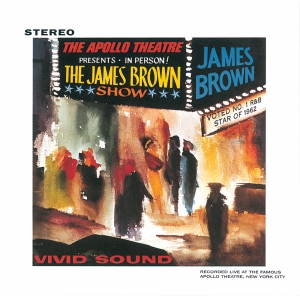 Mettler: The J. Geils Band has a longstanding reputation for being such a dynamic live band. I can attest to that myself, having seen you play the Pine Knob Music Theatre outside of Detroit almost 16 years ago, and then again at Giants Stadium in East Rutherford, New Jersey in 2013. What’s your own benchmark for live performances?
Mettler: The J. Geils Band has a longstanding reputation for being such a dynamic live band. I can attest to that myself, having seen you play the Pine Knob Music Theatre outside of Detroit almost 16 years ago, and then again at Giants Stadium in East Rutherford, New Jersey in 2013. What’s your own benchmark for live performances?
Wolf: The template for that is still one of my favorite records of all time — James Brown Live at the Apollo (1963). I got to spend almost every Wednesday at the Apollo during my high-school years. My high school was like 15 blocks away from the Apollo, so I got to check out the best and the greats. “Nothing but the best and the rest for the garbage,” as John Lee Hooker would say. (MM laughs) Still to this day, that James Brown record is an amazing document. That’s what R&B is all about.
Mettler: I had the honor of meeting Mr. Brown once, after a show he did in Las Vegas. And he still had it, at whatever age he was then.
Wolf: It was an honor meeting Mr. Brown, and being on a panel with him. I even had the great honor of being able to call him James. It was quite a panel. It was myself, James, Afrika Bambaataa, George Clinton, Lou Reed, Madonna, Fred Schneider from the B-52s, and a couple more. It was for the New Music Seminar in New York [The Artists Panel, in August 1984], one of the first ones held at the Hilton Hotel. I was asked to sit next to James to make sure he was OK, and I said, “Most definitely!”
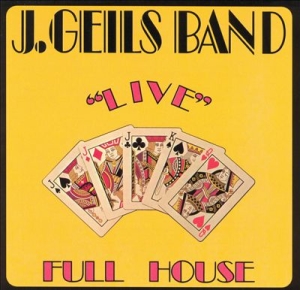 Mettler: What live album best captures the live J. Geils Band legacy?
Mettler: What live album best captures the live J. Geils Band legacy?
Wolf: It’s why I like Full House (1972) so much, because it’s representative of what we did. That might be my favorite. When people ask me what my Desert Island Pick would be, my answer is usually, “I ain’t goin’ to no desert island.” (MM laughs) It’s the Island of Love for me! (chuckles)
But I would say for someone who didn’t know anything about the J. Geils Band, Full House is the one. It might not have the greatest sound, but it captures a certain energy.
Tags: A Cure for Loneliness, Aretha Franklin, Atlantic Records, Bert Berns, Bob Ludwig, Bobby Womack, Chain of Fools, Concord Records, Don Covay, Erma Franklin, First I Look at the Purse, Freeze Frame, Full House, Gateway Studios, Hi Records, It's Raining, J. Geils Band, J.W. Alexander, James Brown, Jerry Ragavoy, Jocko Henderson, John Lee Hooker, Kenny White, Lights Out, Little Richard, Live at the Apollo, Long Tall Sally, Lookin for a Love, Love Stinks, Mercy Mercy, Midnight Souvenirs, Oo ee diddley bop, Otis Clay, Peter Wolf, Rolling On, Sam Cooke, See-Saw, Slim Harpo, Specialty Records, The Boston Tea Party, The Morning After, The Valentinos, WBCN